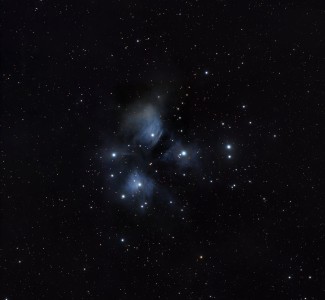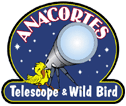IDAS Light Pollution Suppression filter

[ARTICLEIMGR="1"]
I live in a suburb of Helsinki and my observing site has a fair amount of light pollution. The visual limiting magnitude is about 4.5 on the best nights, so visual deep sky observing is difficult. Recently I got interested in imaging because I found out that it is possible to get nice deep sky images despite the sky glow. I purchased a modified webcam and started practicing. Pretty soon I got some results but it left me wondering how much better they could be if the sky glow could be reduced somehow.
I decided to try the IDAS Light Pollution Suppression filter. The filter is specifically intended for imaging, according to the advertising. The IDAS LPS is said to effectively block the narrow spectral lines from mercury, neon and sodium lamps. The transmission of the filter is optimized so that the proper color balance is preserved. The filter also blocks the infrared, so the usual IR blocking filter is not needed when using the LPS. The filter I purchased was a 2" model, intended for a 2" (48 mm) filter thread. The filter is available in many sizes, ranging from a 1.25" eyepiece thread to a whopping and expensive 82 mm. An individually tested transmission curve was included with the filter.
My camera is a black and white model modified webcam, so I concentrated on the light pollution suppression capabilies of the filter instead of the color balance testing. Usually when I take images with my webcam, I take tens of frames using a fairly short exposure time and stack them. I also like to use a short focal length for a wider field of view and an easier tracking with my mount. But the fast focal ratio also means my camera will hit the sky glow limit (the frame background saturates) with a pretty short exposure time. The optimal situation would be if I could expose a few minutes and still get usable frames for stacking.

I decided to find out how long an exposures I can use in my backyard using the filter before the image background becomes too bright. The test setup was my 80 mm refractor reduced to f/3.8 on an equatorial mount. The testing night was a typical moonless winter night with a limiting mag of 4. The test frames have the histograms attached to better illustrate the results. The exposure is correct when the peak of the histogram is about in the middle of the graph. The images are single frames, not stacked or processed otherwise.
First, I took some comparison images without the IDAS LPS filter using the usual IR blocking filter with the camera. The first test image had an exposure time of 30 seconds. The background is gray and the image is a little overexposed. Increasing the exposure to one minute saturated the background and nothing is left visible of the target object. So the optimal exposure with the LPS filter is about 30 seconds and the maximum usable time is between 30s and one minute.
Then I took some images with the LPS filter attached to the camera and without the IR blocking filter. The LPS blocks all infrared according to the transmission curve so a separate IRB filter is not needed. Clearly it can be seen that the filter does its job quite well. The one minute exposure places the histogram just about in the middle of the graph.

Increasing the exposure time to 90 seconds brightens the background considerably but the frame is still usable for stacking. It takes 2 minutes of exposure to totally saturate the frame.
My little test shows that I can use over double the exposure times with the filter before the sky glow becomes a limiting factor. Of course a filter like this won't be a substitute for a dark imaging site. Also, I understand that no filter can totally block all artificial sky glow because some part of it has a continuous spectrum. But when travelling to a dark sky location is not possible, the filter does a decent job of reducing sky glow and increasing the contrast of my webcam images.
The final result of my imaging session is below.

I live in a suburb of Helsinki and my observing site has a fair amount of light pollution. The visual limiting magnitude is about 4.5 on the best nights, so visual deep sky observing is difficult. Recently I got interested in imaging because I found out that it is possible to get nice deep sky images despite the sky glow. I purchased a modified webcam and started practicing. Pretty soon I got some results but it left me wondering how much better they could be if the sky glow could be reduced somehow.
I decided to try the IDAS Light Pollution Suppression filter. The filter is specifically intended for imaging, according to the advertising. The IDAS LPS is said to effectively block the narrow spectral lines from mercury, neon and sodium lamps. The transmission of the filter is optimized so that the proper color balance is preserved. The filter also blocks the infrared, so the usual IR blocking filter is not needed when using the LPS. The filter I purchased was a 2" model, intended for a 2" (48 mm) filter thread. The filter is available in many sizes, ranging from a 1.25" eyepiece thread to a whopping and expensive 82 mm. An individually tested transmission curve was included with the filter.
My camera is a black and white model modified webcam, so I concentrated on the light pollution suppression capabilies of the filter instead of the color balance testing. Usually when I take images with my webcam, I take tens of frames using a fairly short exposure time and stack them. I also like to use a short focal length for a wider field of view and an easier tracking with my mount. But the fast focal ratio also means my camera will hit the sky glow limit (the frame background saturates) with a pretty short exposure time. The optimal situation would be if I could expose a few minutes and still get usable frames for stacking.

I decided to find out how long an exposures I can use in my backyard using the filter before the image background becomes too bright. The test setup was my 80 mm refractor reduced to f/3.8 on an equatorial mount. The testing night was a typical moonless winter night with a limiting mag of 4. The test frames have the histograms attached to better illustrate the results. The exposure is correct when the peak of the histogram is about in the middle of the graph. The images are single frames, not stacked or processed otherwise.
First, I took some comparison images without the IDAS LPS filter using the usual IR blocking filter with the camera. The first test image had an exposure time of 30 seconds. The background is gray and the image is a little overexposed. Increasing the exposure to one minute saturated the background and nothing is left visible of the target object. So the optimal exposure with the LPS filter is about 30 seconds and the maximum usable time is between 30s and one minute.
Then I took some images with the LPS filter attached to the camera and without the IR blocking filter. The LPS blocks all infrared according to the transmission curve so a separate IRB filter is not needed. Clearly it can be seen that the filter does its job quite well. The one minute exposure places the histogram just about in the middle of the graph.

Increasing the exposure time to 90 seconds brightens the background considerably but the frame is still usable for stacking. It takes 2 minutes of exposure to totally saturate the frame.
My little test shows that I can use over double the exposure times with the filter before the sky glow becomes a limiting factor. Of course a filter like this won't be a substitute for a dark imaging site. Also, I understand that no filter can totally block all artificial sky glow because some part of it has a continuous spectrum. But when travelling to a dark sky location is not possible, the filter does a decent job of reducing sky glow and increasing the contrast of my webcam images.
The final result of my imaging session is below.



